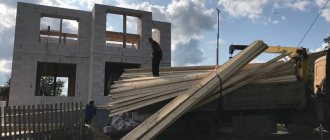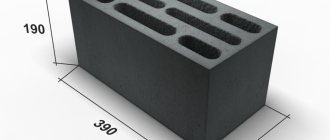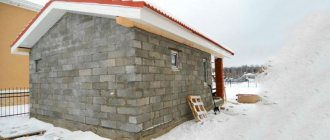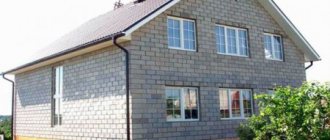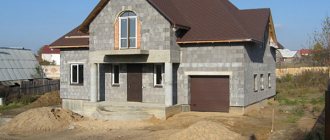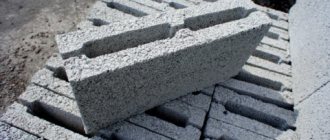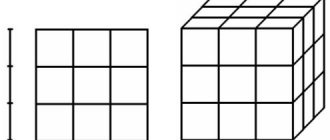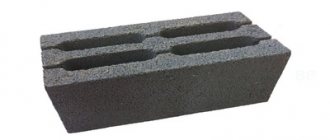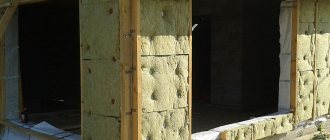In the search for an effective material for construction, many artificial stone composites have been created, one of which is expanded clay concrete. Blocks from it are used for the construction of walls and partitions with high sound insulation and low thermal conductivity. In addition, this material is cheaper than monolith and even aerated concrete. Let's consider the main types and characteristics of expanded clay concrete blocks.
Basic composition
To produce blocks, several main components are used in quantities that determine the characteristics of the finished products:
- Portland cement is not lower than grade M400. Its total quantity determines how strong and heavy the block will be and what brand it will be in terms of strength. Determined technologically.
- Expanded clay is foamed clay balls with a low thermal conductivity; they are also used as bulk insulation. Their number in the total mass ranges from 10 to 90%. The more expanded clay, the higher the thermal resistance, the lower the grade of the block in terms of strength.
- Sand is a fine filler. To mix the solution, construction (river) sand, cleared of impurities, is used.
- Plasticizers can be used to improve certain material characteristics.
The higher the strength of expanded clay concrete blocks, the less water in the solution. Its amount is reduced when plasticizers are used.
Industrial production of expanded clay concrete products is carried out according to the rules set out in GOST 6133-99 “Concrete wall stones. Technical conditions".
Advantages of the material
Expanded clay concrete blocks are considered environmentally friendly. Their production uses components of natural origin that do not have a harmful effect on the human body and the environment. In terms of radiation safety, the material belongs to the first class and fully complies with sanitary and hygienic rules for sound insulation and vapor permeability.
The thermal conductivity of the blocks and their use in construction make it possible to build warm objects.
The low specific gravity of expanded clay blocks helps to save on the construction of the foundation base and transportation of material.
The parameters and weight of the stones reduce the labor costs of people and the consumption of cement for the construction of walls, and speed up the pace of laying out the masonry.
The low level of hygroscopicity and resistance to low temperature conditions increase the operational period of the building and allow saving on interior and exterior finishing work.
The use of material with through voids makes it possible to install load-bearing frames in the walls, improving load-bearing performance.
Minimal shrinkage guarantees cost savings during repairs.
Varieties
Expanded clay blocks are a large group of materials. By structure they are:
- Full-bodied. These are characterized by high load-bearing capacity and are used for the construction of load-bearing external walls.
- Hollow ones are less durable, but they are “warmer” due to the air cavities in the body of the block. They are used as thermal insulation and sound protection for external walls and the construction of internal partitions. Hollow stones are varied in shape: with different numbers of holes of different configurations.
By purpose:
- Wall block for the construction of external vertical structures. Product dimensions range from 90...390 mm in length, 138...288 in width, height is 138 or 188 mm.
- A partition block with less weight and density to ensure silence in individual rooms. The unified length of products is 190...590 in length, 90 mm in width and 188 mm in height.
- Ventilation with technological openings and cavities for laying communications. It combines the function of heat protection and sound insulation, but is not a component of load-bearing structures. Standard block dimensions are 390x190x188 (length, width, height in mm).
By place in the masonry:
- Ordinary for the main masonry;
- The facing is equipped with a ceramic surface of different textures and colors for laying out the front side of the wall.
Sound insulation of aerated concrete and brick
To stop a sound wave as much as possible, mass is needed, that is, high-density materials, for example brick, are best suited for partitions, while aerated concrete is lightweight and inferior to brick in sound insulation of wave noise. But it is worth noting that aerated concrete retains low-frequency structural noise better than brick; read about this below in the text.
Specifications
The performance indicators of the blocks vary within the limits of changes in the composition and needs of consumers. Let's consider them in comparison with popular aerated concrete.
| Index | Units | Meaning | |
| Expanded clay concrete | Aerated concrete | ||
| Strength | kg/cm2 | 35…250 | 10…50 |
| Unit weight | kg | 10…23 | 12…48 |
| Density | kg/m3 | 500…1800 | 400…800 |
| Thermal conductivity | W/(m∙S) | 0,18…0,9 | 0,095…0,215 |
| Frost resistance | F, cycles | up to 75 | up to 35 |
| Vapor permeability | mg/(m∙h∙Pa) | 0,094…0,256 | 0,140…0,230 |
| Durability | years | not less than 60 | not less than 100 |
| Fire resistance class | A1 | NG | |
| Price per m3 | rubles | From 2000 | From 2800 |
The performance of expanded clay concrete and aerated concrete blocks depends on the composition of the mortar used for molding. The main differences are obvious:
- The strength of products with expanded clay with minimal use of porous filler is much higher, as is the density, respectively;
- The resistance to freezing of dense concrete with expanded clay is much higher due to the absence of air pores, which are present in a product foamed with gas;
- Material without clay inclusions has higher fire resistance;
- The price differs;
- Practicality: it is difficult to attach a shelf to an aerated concrete wall due to the flowability of the material; there is no such problem with expanded clay concrete.
When choosing blocks for construction, you should rely on the design characteristics of structures and take into account the practical features of these materials.
Negative sides
As follows from some reviews, expanded clay as floor soundproofing is not that good. The strength of the material is inferior to heavy concrete mortar, so it is undesirable to use such blocks for arranging the foundation.
In addition, the geometric parameters of the blocks leave much to be desired.
When constructing objects with a large number of floors, blocks containing a lot of cement composition should be used. Because of this, it will be necessary to pour a more powerful foundation, which will deteriorate the thermal insulation properties of the object, and there will be a general increase in the cost of design work.
Advantages of expanded clay concrete
Composite material made from building stone is becoming widespread not only due to its technical indicators, but also to its practical components:
- Ease of transportation due to the low weight and correct geometric shape of the products.
- There is no need for a massive, expensive foundation, which reduces the overall cost of building a house.
- Compatibility with any types of facade and interior decoration.
- Expanded clay in the body of the blocks acts as insulation, so the installation of an additional thermal insulation layer of the wall is not required. The material is also suitable for the construction of baths due to its low thermal conductivity and minimal vapor permeability.
- The strength and density of the products allow masonry to be carried out without additional reinforcement, as well as fixing fasteners in the wall without any problems.
- Easy installation on cement-sand mortar. The products do not have grooves or ridges; the joining occurs like ordinary masonry.
- The block house is warm and quiet. The effect of sound protection can be enhanced by using hollow elements.
Blocks for building a house - which ones are better?
For the needs of private housing construction, the following materials can be used:
- modules made of cellular concrete (foam concrete/aerated concrete/gas silicate);
- expanded clay concrete blocks;
- cinder blocks;
- sawdust concrete and wood concrete;
- polystyrene concrete blocks.
In order for concrete to maintain the specified fire resistance, when combined with other building materials, all connecting nodes must be protected from fire.
When choosing, you should focus on design data and actual construction conditions, since none of the presented materials can be called universal. For example, what kind of foam block is recommended to use for the construction of a house whose height does not exceed two floors, and expanded clay concrete is more durable and allows you to design a building with a higher number of storeys , but is inferior to cinder block in terms of water permeability.
Flaws
When choosing expanded clay concrete for construction, it is necessary to take into account the disadvantages of the material to avoid unpleasant “surprises”:
- The tested samples pass compressive loads without any complaints, and they are subjected to shock loads mainly with destruction. This is due to the presence of fragile foam balls inside the durable stone, the number of which determines how unstable the block will be to incorrect movements.
- When using small blocks, many seams are formed in the wall, which are cold bridges. The problem is eliminated by additional insulation and cladding of the facade.
Soundproofing of interior walls made of other materials
Other building materials, passing by weight, have low sound insulation and do not provide standard values.
For example, the density of tongue-and-groove blocks (plaster) is 1100 kg/m3. The calculated noise insulation of a partition made of plastered tongue-and-groove timber with a standard thickness of 80 mm is ΔRw = 40 dB.
Sound insulation of walls made of foam concrete or aerated concrete blocks have even weaker sound insulation than walls made of tongue-and-groove walls. The density of D400 foam concrete is only 400 kg/m3, i.e. even less than the tongue-and-groove! A 100 mm thick foam concrete wall has an insulation index of only ΔRw= 37 dB.
The low sound insulation of such walls is also caused by undesirable resonance phenomena in the range of 500–800 Hz (the middle of the speech frequency range), which significantly reduce the sound insulation of household noise.
Some useful tips
To reduce the disadvantages to nothing, when choosing expanded clay concrete, experts recommend adhering to simple rules:
- The façade cladding should not be delayed. The shrinkage of the walls is minimal, so it is recommended to immediately protect the masonry from external influences. This is necessary to protect the material from getting wet and losing strength.
- In the regions of the northern and central zones it is impossible to do without additional insulation of walls. You can also use a professional thermal design calculation to determine this need.
- Expanded clay concrete blocks are not suitable for use in foundations due to the clay's susceptibility to getting wet. Their maximum is a well-waterproofed base.
The advantages of a house made of expanded clay concrete blocks can be overshadowed by inept installation. Despite the high speed and apparent simplicity of masonry, a structure made from materials that protect against cold and sound may become ineffective and will require significant additional insulation and finishing. It would be much more reliable to entrust the construction of the building to professionals: the fee for the work will definitely not exceed the costs of possible dismantling or repairs.
More about sound insulation
Those who deal with the design of construction projects are constantly faced with the peculiarity of the technical specifications from the customer, which stipulates the issue of sound insulation of the room. For some reason, private developers do not consider this issue a priority. And in vain.
The lack of good sound insulation in rooms, especially between neighboring apartments, during the subsequent operation of the facility significantly poisons life, giving rise to conflicting relationships between family members and neighbors.
To avoid such situations, experts recommend installing a layer of expanded clay on the floor to reduce audibility. And don’t forget about the walls.
The indicators of sound insulation characteristics of enclosing structures determined by GOSTs are determined for each, taking into account their purpose on the basis of SNiP.
For a wall this value is 50 - 62 dB, for a partition - 41 - 50.
Measurements were experimentally carried out using Mayer's method using the Durgamer-Kammerer acoustic diagram, which showed that walls forty centimeters thick, made of expanded clay concrete block material, have a sound insulation value of 63.5 dB.
By purchasing such material, you will receive excellent sound insulation performance and will be able to use the room without worrying about excess noise.
Indirect noise transmission to block walls
Another unpleasant feature of walls made of tongue-and-groove or porous concrete is their strong re-emission of noise from lower and upper neighbors. Due to the low weight of such walls, sounds from massive floors are transmitted very well to them. In addition, plaster has very low internal losses (as a test, you can knock on the plaster wall and feel its “ringing”), which also enhances the re-emission of structural noise.
Subjectively, after dismantling all the internal walls, the noise level is reduced by about half!
Installation of interior walls made of blocks cannot be carried out without rigid connections with the existing structures of the house, so it will not be possible to completely eliminate the transmission of vibrations to them.
A noticeable reduction in noise can be achieved if the partitions are not raised to overlap the ceiling by 10-20 mm. The gap should be filled with mineral wool or other damper and the joint should be sealed. This measure will reduce the transmission of noise from above to the partitions.
An example of a vibration-isolated connection between a partition and a ceiling.
Under no circumstances should you use polyurethane foam, which is very light and has a closed cell structure, and therefore has neither reflective nor absorbent properties. At the same time, foam is an acoustically rigid material and perfectly transmits vibrations.
Sound insulation of interior walls made of tongue-and-groove (or aerated concrete) turns out to be insufficient. Such partitions often have to be additionally soundproofed.
Soundproofing of interior partitions made of plasterboard
For maximum sound insulation, multi-layer plasterboard partitions are built inside the apartment, their structure resembling a sandwich: inside there is a profile base filled with sound-absorbing material, and outside there are sheets of gypsum fiber and plasterboard:
With the same thickness, the sound insulation of interior partitions made of plasterboard will always be higher than that of walls made of foam concrete or aerated concrete. The sound insulation of a basic scheme with a thickness of 100 mm will be R w
= 52 dB
(which is 11 dB better than that of a tongue-and-groove ridge and 15 dB better than that of a foam block)!
And the noise created by neighbors is practically not transmitted to plasterboard partitions - the problem of noise re-radiation from neighbors above and below is automatically solved! And all thanks to a multi-layer structure with alternating hard and soft layers.

